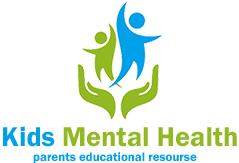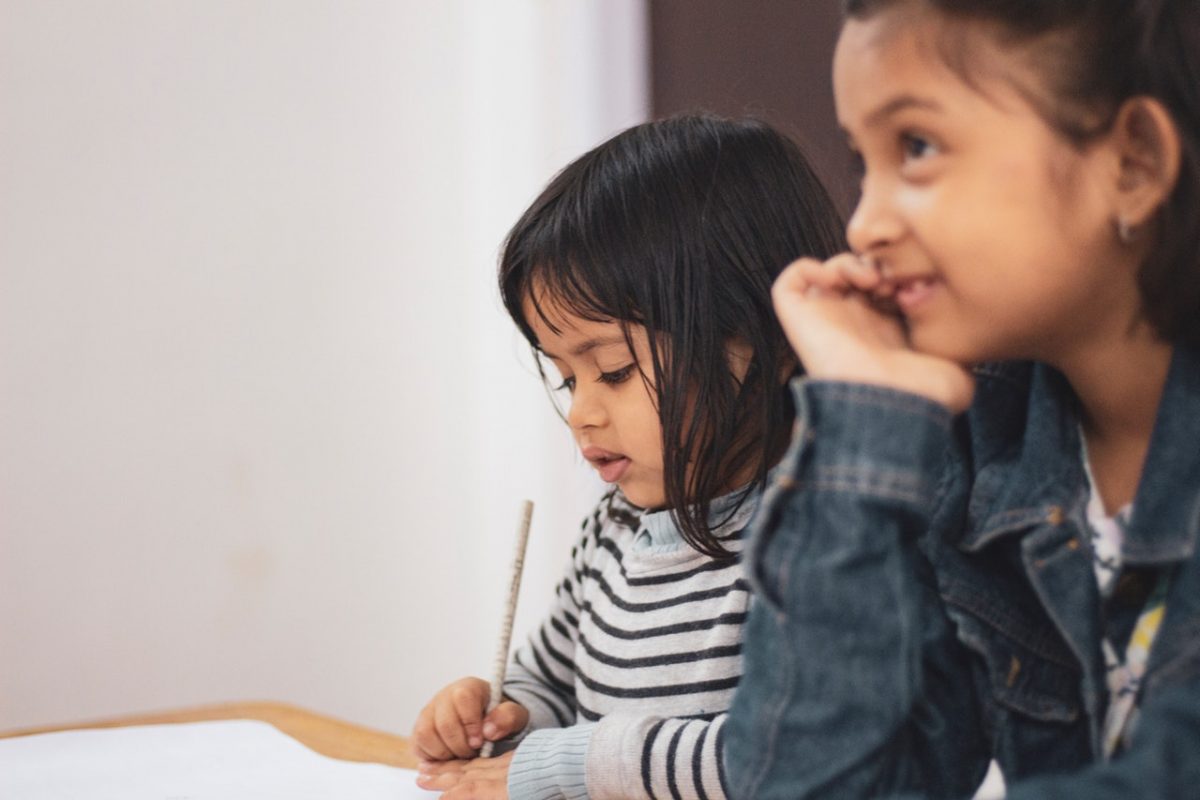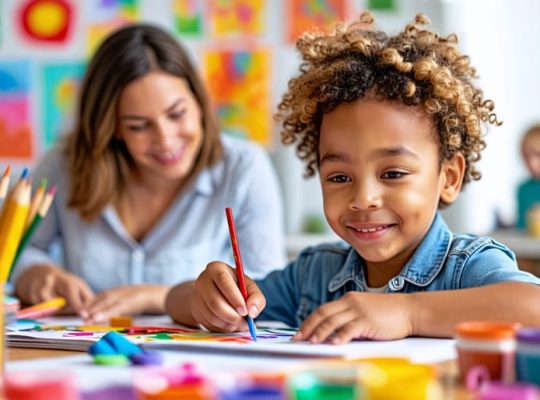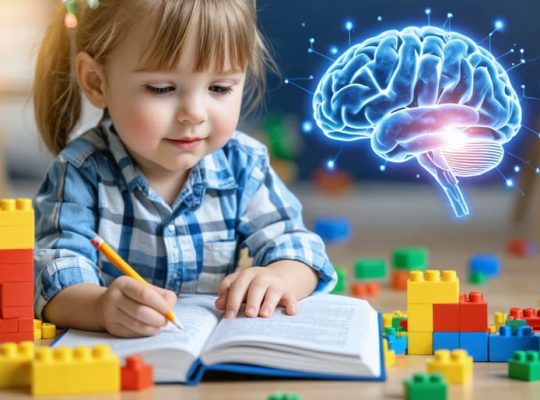Observe your child’s behavior closely; look for signs of anxiety like excessive worry, avoidance of activities, or physical complaints such as headaches or stomachaches. Validate their feelings by listening empathetically and acknowledging their emotions, fostering an open dialogue about their concerns. Engage in calming activities together, like deep-breathing exercises or mindful coloring, creating a safe environment for them to express themselves. Maintain consistent routines to provide a sense of stability and security, helping reduce uncertainty and anxiety triggers. Consult with a pediatrician or mental health professional for tailored guidance, ensuring you have expert support in understanding and addressing your child’s specific needs.
What is Childhood Anxiety?
Childhood anxiety is more than just the typical worries or fears that most kids experience at different stages of development. While it’s normal for children to fear things like monsters under the bed or the first day of school, anxiety becomes a concern when these fears escalate and interfere significantly with their daily lives. Childhood anxiety disorders can manifest as persistent worries, physical symptoms like stomachaches or headaches, or avoidance of activities they once enjoyed.
Many parents may find it surprising how common childhood anxiety is. Research shows that approximately 7% of children aged 3-17 experience anxiety problems. When left unaddressed, these issues can impact a child’s social interactions, performance at school, and overall happiness and well-being. It’s important for parents, teachers, and healthcare professionals to be aware of the signs and types of anxiety disorders. These might include generalized anxiety disorder, separation anxiety, or specific phobias.
Understanding childhood anxiety is the first step in offering meaningful support. Many children benefit tremendously from compassionate understanding and reassurance, as well as structured guidance to help manage their anxiety. By maintaining a supportive and empathetic approach, adults can empower children to navigate their feelings and build resilience in the face of anxiety.
Common Types of Childhood Anxiety Disorders

Generalized Anxiety Disorder (GAD)
Generalized Anxiety Disorder (GAD) in children is characterized by persistent and excessive worry about various aspects of daily life, from academic performance to friendships. Unlike typical anxiety, which can come and go, children with GAD experience anxiety that is constant and overwhelming, often finding it hard to relax. They might display symptoms such as restlessness, irritability, muscle tension, and trouble concentrating. In some cases, children might complain of physical symptoms like stomachaches or headaches, which are manifestations of their internal stress.
In school settings, children with GAD may avoid certain situations that they perceive as stress-inducing, such as speaking in front of the class or participating in group activities. At home, they might seek frequent reassurance from parents or caregivers about safety and routine matters. Recognizing these signs early can help in managing GAD effectively. Supportive environments, open communication, and professional guidance can make a significant difference in helping children navigate their worries, ensuring they do not feel alone in their experiences.
Separation Anxiety Disorder
Separation Anxiety Disorder is a common childhood condition where a child experiences intense anxiety when apart from their primary caregivers. This can manifest as excessive fear of being alone, nightmares about separation, or physical symptoms like stomach aches when anticipating time apart. It’s typical for children to go through phases of separation anxiety, but when it interferes with daily life, it might be a sign of the disorder.
Imagine a child starting school and feeling overwhelmed by the thought of being away from home. They might cry, cling to their parents, or refuse to leave home. These reactions are driven by fear that something bad will happen while they’re apart.
Triggers can vary; a change in environment, a stressful event at home, or transitioning to a new school can all play a role. Recognizing these symptoms early and showing empathy is crucial. Providing reassurance and gradually helping the child build coping strategies can make a significant difference.

Social Anxiety Disorder
Social anxiety disorder in children can be a challenging experience, often manifesting as intense fear or worry about social situations. Children with social anxiety may worry excessively about being judged or embarrassed in front of others. This can lead to avoidance of social interactions like playing with peers, participating in class, or attending school events. You might notice a child becoming very quiet, clingy, or avoiding eye contact when they are anxious.
These feelings can significantly impact a child’s ability to form friendships and enjoy daily activities, sometimes leading to feelings of isolation. It’s crucial for parents, teachers, and healthcare professionals to recognize these signs early on. Offering a safe, supportive environment along with encouragement can help children gradually face social challenges. Personal stories from other families, and guidance from mental health professionals, can offer valuable insights into managing and easing symptoms. Remember, being empathetic and patient can make a world of difference in helping a child navigate and overcome social anxiety.
Specific Phobias
Specific phobias in children are intense, irrational fears of specific objects or situations, such as animals, insects, heights, or water. These fears go beyond typical childhood worries and can interfere with a child’s daily life. Imagine Sarah, a lively second grader, who suddenly becomes anxious and tearful at the thought of attending a friend’s pool party. Her heart races, and she might cry or cling to her parents, avoiding any water-related activities altogether. Such responses are common indicators of a specific phobia.
Experts suggest these phobias often emerge around ages 7 to 11, when children’s imaginations are vivid and their understanding of risks is still developing. Notably, specific phobias can coexist with other anxiety disorders, amplifying a child’s distress. It’s essential for parents and teachers to approach these fears with patience and understanding. Acknowledging and validating the child’s feelings, while gently encouraging gradual exposure to the feared object or situation, can significantly help. Providing reassurance and involving a mental health professional when necessary can support children like Sarah in overcoming their fears and regaining confidence.

How to Recognize Anxiety in Children
Recognizing anxiety in children can be challenging, as symptoms often differ from those seen in adults and may vary greatly between children. For parents and teachers, it’s essential to understand the signs so they can provide the necessary support. Here are some indicators to watch for:
Children experiencing anxiety might frequently complain of physical symptoms like headaches or stomachaches without an obvious cause. They may become irritable or have difficulty concentrating on tasks. Some children might avoid activities that were once enjoyable, preferring instead to stay in comfortable and familiar environments. This can often be misconstrued as shyness or disinterest, but it might actually signify anxiety.
Changes in sleep patterns, such as trouble falling asleep, staying asleep, or having nightmares, can also indicate anxiety. Additionally, children might express excessive worry about everyday activities or situations. They may repeatedly seek reassurance from trusted adults, needing constant affirmation that everything is okay.
It’s important to consider the context of these behaviors as well. Are they consistent across different environments, like home and school, or do they seem exacerbated in specific settings? Personal anecdotes from other parents or insights from teachers who spend significant time with the child can provide valuable perspectives.
Listening to children and encouraging open communication can help them feel understood and supported. Professionals, such as child psychologists, can offer expert advice and strategies tailored to the child’s needs. By paying attention and taking gentle steps to address these signs, parents and teachers can play a vital role in helping children navigate their anxiety.
Helping Your Child Overcome Anxiety
Creating a Supportive Environment
Fostering a nurturing environment for children with anxiety involves empathy, patience, and understanding. Start by actively listening to their concerns and offering reassurance. Encourage open communication, making it clear that their feelings are valid and important. Consistency in routines can provide a comforting structure, while flexibility in expectations allows children to navigate their anxieties at their own pace. Incorporate relaxation techniques like deep breathing or mindfulness exercises to help them manage stress. Highlighting successes, no matter how small, boosts confidence. Collaborate with teachers and healthcare professionals to create a supportive network that addresses their unique needs.
When to Seek Professional Help
If your child’s anxiety is interfering with their daily life, it might be time to seek professional help. Look for signs such as persistent worry, changes in sleep or eating habits, or withdrawal from activities they once enjoyed. Consulting with a child psychologist or counselor offers a supportive space to explore these concerns. An expert can provide valuable insights, coping strategies, and, if needed, recommend further assessment or treatment. Remember, seeking help is a positive step towards understanding and supporting your child’s mental health, ensuring they are understood and supported in their unique journey.
Conclusion
Understanding childhood anxiety disorders is crucial for offering the right support. Recognizing the symptoms early can lead to effective interventions and improved outcomes. It’s important to remember that seeking help does not reflect failure but rather a positive step for your child’s well-being. By reaching out, you contribute to normalizing discussions around mental health and help shatter the stigma. Engage with healthcare professionals, teachers, and other parents so you don’t navigate this journey alone. With the right support, children can thrive even when facing anxiety, empowering both them and their families.







